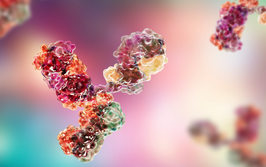Riding China’s Regulatory Rapids
The Chinese market presents a major opportunity for pharma companies, but spending time and money on keeping track of its quickly shifting regulations – as recent changes in the excipients field have shown – is key to success
Matthias Bucerius | | Opinion

With the world’s largest (aging) population, China provides an enormous opportunity for pharmaceutical companies. Traditionally, the Chinese pharma market has focused on the manufacture of small molecule APIs, but over the past five years, things have changed. Chinese biopharma companies have cropped up and we’re seeing an increasing number of global companies investing in China.
Foreign companies, however, can sometimes struggle to navigate the country’s regulatory landscape, which has undergone significant changes over the past two decades. Here, I will focus on the regulation of excipients, which, despite a recent shift towards Western standards, is still quite unique (1).
It wasn’t until the turn of the century that Chinese regulators first stated in article 11 of the Pharmaceutical Administration Law that excipients should meet certain requirements for medical use. But the general wording led to inconsistencies, with some provinces regulating excipients as APIs and others not regulating them at all. Then, in 2005, the Chinese FDA introduced a pharma excipient dossier, which proposed excipient registration according to the same process as APIs. And that meant they would be reviewed by the Center of Drug Evaluation (CDE) for import and novel excipients, and by the local CFDA for excipients described in the Chinese Pharmacopeia (ChP). But even this was more of a general principle, with execution and adherence often varying.
Roughly 10 years later, the Chinese State Council initiated substantial reforms for drug approval processes. In 2017, this culminated with the “co-review” or joint review approach. Now, the excipient manufacturer (and no longer the drug manufacturer) is the first party to
submit an application of an excipient. The excipient manufacturer then issues a letter of authorization (LOA) with the registration number to the pharmaceutical manufacturer who uses the respective excipient. The pharmaceutical manufacturer then includes the LOA in its dossier when applying for marketing authorization for drugs on the Chinese market.
It was a big change. And although the overall quality framework has dramatically improved over the past 10 years (and is much more comparable to quality systems and standards that we see in the West), the co-review process can be difficult for companies to get their heads around.
When submitting an application through the co-review process, excipient manufacturers must compile a comprehensive dossier to the Chinese authorities for all the excipients they want to commercialize in China. General information on the company and the excipient itself, such as its name, structure, characteristics, approval and usage information must be included. Moreover, detailed information on the manufacturing process is required, together with a list of equipment and process validation data. Lastly, the dossier must include quality control specifications with descriptions of the analytical methods and validation.
The level of detail required for the registration dossier is based on the excipient classification as revised by the National Medical Products Administration (NMPA, formerly CFDA) in July 2019. Excipients are classified into products with or without a history of use in approved drugs. The latter comprises completely new molecules, as well as molecules with simple changes to their structure or a changed route of administration. Products with a history of use are, in turn, divided into two groups of excipients. The first group includes those excipients that are included in the Chinese Pharmacopoeia or the pharmacopoeias of the EU, the US, United Kingdom or Japan. The second group includes those that are not included in these documents.
It’s no surprise that a major challenge for companies looking to take advantage of China’s emerging biopharma industry is the rapid pace at which regulations change. For example, when the co-review process was introduced in 2017, there was no transition time; to this day, many excipient manufacturers lack the technical dossiers needed for successful registration. As a result, many drug manufacturers cannot yet register their products in China. Another major challenge is that the Chinese Pharmacopeia has not yet been fully harmonized with other international compendia, forcing global pharmaceutical companies to perform additional comparisons of methods and cross-validation checks.
Regulatory developments – and the rise of China’s technology and biopharma industries – have shifted public opinion: China is no longer viewed simply as a location for cheap manufacturing. To successfully invest in China, companies should employ the same focus on quality as they would in Germany, the US, or Japan. The fast-growing Chinese pharmaceutical market is highly attractive and holds tremendous potential.
Success requires the investment of time and money – and an ability to understand and navigate China’s rapidly evolving regulatory environment. Overcoming the remaining challenges is both rewarding and feasible. And given that the Chinese market is now poised to become even more open, the potential value for international pharmaceutical companies can only increase.
- Merck, “Chinese Excipient Regulation – a Globally Unique Challenge” (2019). Available at: https://bit.ly/2U6YUo6



















